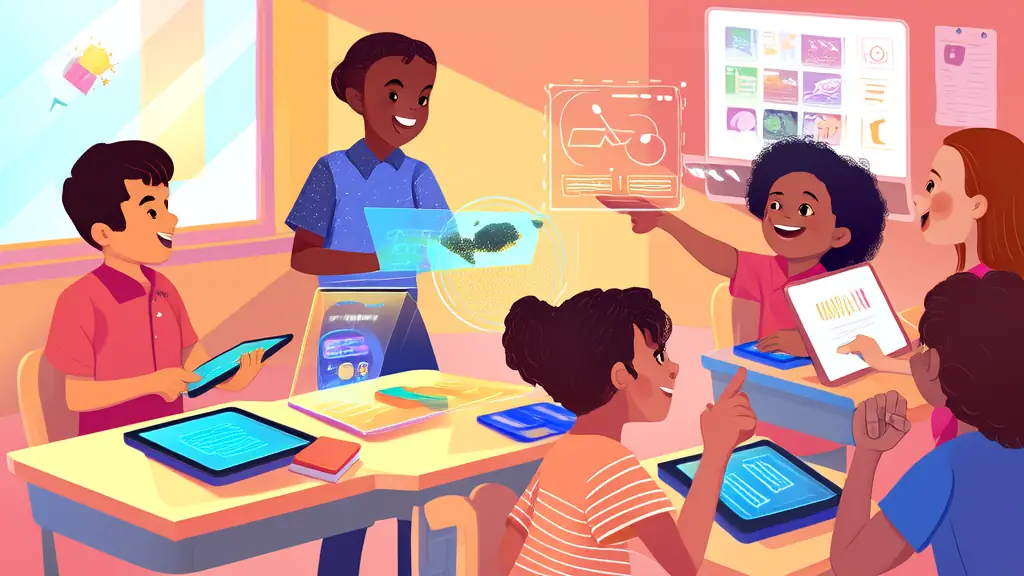
Empowering the Future: Navigating K12 Education in 2025
Welcome to an exciting era in K12 education, where traditional boundaries are being redefined by innovative teaching methods, groundbreaking research on child development, and the transformative power of technology. As we stand at the crossroads of change, it's crucial for both parents and educators to stay informed and engaged. In this blog post, we'll explore the latest trends, insights, and practical tips that can help shape a brighter future for our children.
The Rise of Personalized Learning: Tailoring Education to Each Student
One of the most significant shifts in K12 education is the move towards personalized learning. This approach recognizes that each student has unique strengths, weaknesses, and learning styles. By leveraging data and analytics, teachers can now tailor their instruction to meet the individual needs of every student. For example, platforms like DreamBox Learning and Summit Learning use adaptive algorithms to adjust the difficulty and content of lessons based on a student's performance. Research from the Bill & Melinda Gates Foundation shows that personalized learning can lead to higher engagement and better academic outcomes.
Child Development Insights: Understanding How Kids Learn Best
Recent advancements in neuroscience and psychology have provided valuable insights into how children develop and learn. One key finding is the importance of play in early childhood education. Play-based learning not only fosters creativity and social skills but also enhances cognitive development. For instance, the Reggio Emilia Approach emphasizes hands-on, experiential learning, allowing children to explore and discover through play. Additionally, research from the American Psychological Association highlights the benefits of a growth mindset, which encourages students to view challenges as opportunities for growth rather than insurmountable obstacles.
Educational Technology Trends: Tools for the Modern Classroom
Technology continues to revolutionize the way we teach and learn. Virtual and augmented reality (VR/AR) are becoming increasingly popular in K12 classrooms, providing immersive experiences that enhance understanding and retention. For example, the Google Expeditions app allows students to take virtual field trips to historical sites, museums, and even outer space. Another trend is the use of artificial intelligence (AI) in education, with tools like Carnegie Learning offering AI-powered math tutoring that provides real-time feedback and support. These technologies not only make learning more engaging but also help teachers manage their workload and provide more effective instruction.
Practical Tips for Parents and Teachers: Fostering Success at Home and in the Classroom
For parents, creating a supportive and stimulating home environment is crucial. Encourage your child's curiosity by asking open-ended questions and providing opportunities for exploration. Set aside dedicated time for reading and other educational activities, and be an active participant in your child's learning journey. For teachers, incorporating a variety of teaching methods and using formative assessments can help you better understand and address the needs of your students. Collaborate with colleagues and seek out professional development opportunities to stay current with the latest educational trends and best practices.
Success Stories and Case Studies: Real-World Impact
There are many inspiring success stories that demonstrate the power of these new approaches. For example, the Albemarle County Public Schools in Virginia implemented a personalized learning model, resulting in a 10% increase in graduation rates and a 15% reduction in dropout rates. Similarly, the AltSchool network, which uses a combination of personalized learning and cutting-edge technology, has seen significant improvements in student engagement and academic performance. These case studies highlight the potential for transformative change when educators and parents work together to embrace innovation.
Conclusion: A Call to Action
As we navigate the evolving landscape of K12 education, it's clear that the future is bright. By embracing personalized learning, staying informed about child development, leveraging educational technology, and fostering a collaborative environment, we can ensure that our children receive the best possible education. Whether you're a parent or an educator, your role is vital in shaping the next generation. Let's continue to innovate, adapt, and inspire, so that every child can reach their full potential.